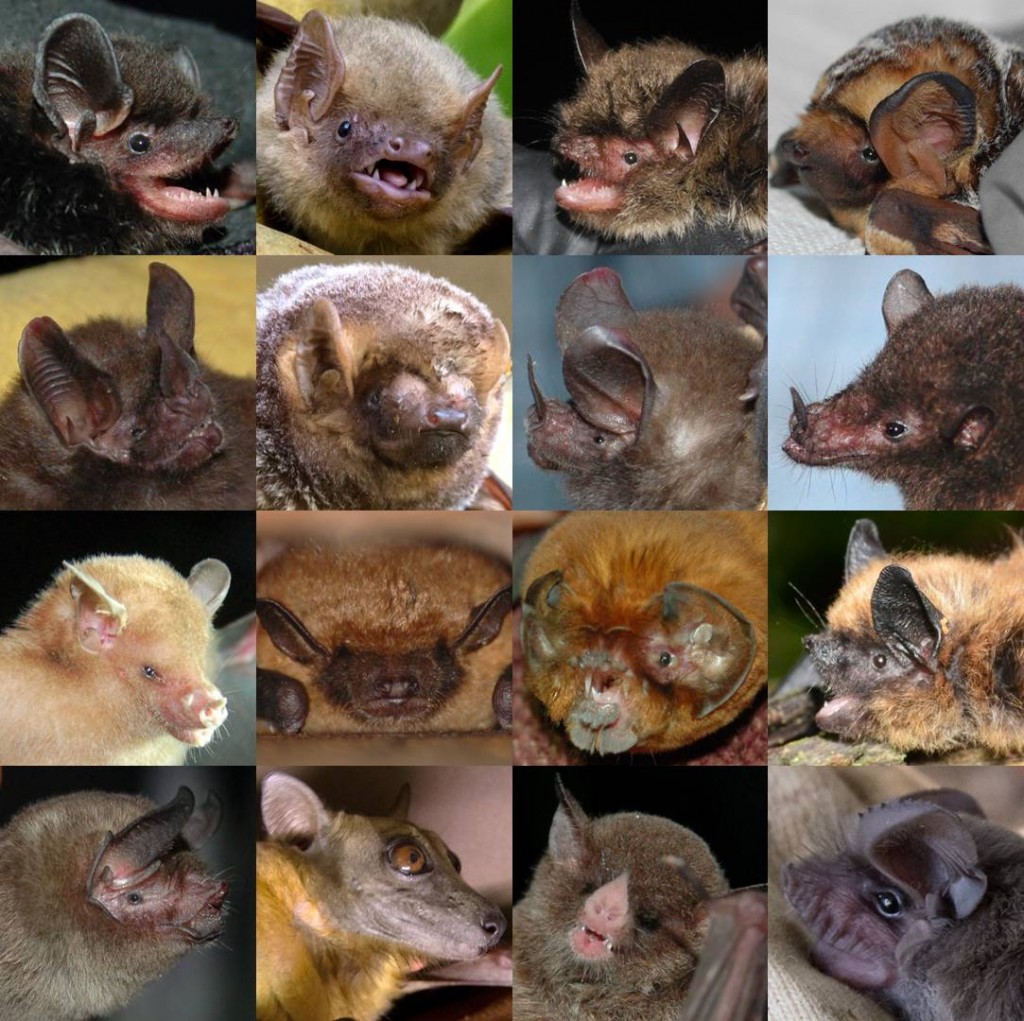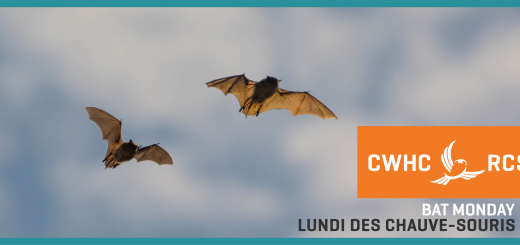Bat Week Day 2: The many faces of bats
 Bats are among the most diverse group of mammals and represent about 20% of all mammalian species. Worldwide more than 1300 different bat species have been described, from the smallest (the bumblebee bat: 2 grams) to the largest (the golden-crowned flying fox: 1.2 kg with a wingspan of 1.7 meters).
Bats are among the most diverse group of mammals and represent about 20% of all mammalian species. Worldwide more than 1300 different bat species have been described, from the smallest (the bumblebee bat: 2 grams) to the largest (the golden-crowned flying fox: 1.2 kg with a wingspan of 1.7 meters).
Bats live on all continents, except Antarctica, and fill many niches in the ecosystems they live in. There are bats that feed on insects, fruit, nectar, blood, frogs, fish, other bats, and more. Many bats can use echolocation to navigate in the dark and have faces that are adapted to accommodate this. Others have faces that help guide fruit juice to their mouth.
Today we honour the beauty of diversity with this tribute to the many faces of bats!
IMAGE KEY
First row, left to right:
- Silver-haired bat (Lasionycteris noctivagans) – Bermuda, Canada, Mexico, and the United States
- Northern yellow bat (Lasiurus intermedius) – Southeastern United States and eastern Texas, Cuba, coastal Mexico, Belize, Costa Rica, El Salvador, Guatemala, and Honduras
- Northern long-eared myotis (Myotis septentrionalis) – Eastern North America
- Hoary bat (Lasiurus cinereus) – North America (including Hawaii) and South America
Second row, left to right
- Hairy big-eared bat (Micronycteris hirsute) – South and Central America
- Seminole bat (Lasiurus seminolus) – Southern United States
- Hairy big-eared bat (Micronycteris hirsute) – South and Central America
- Geoffroy’s tailless bat (Anoura geoffroyi) – Mexico, Central America, and northern South America
Third row, left to right
- Buffy flower bat (Erophylla sezekorni) – Cuba, Puerto Rico, Jamaica, Bahamas, and Cayman Islands
- Big brown bat (Eptesicus fuscus) – North America, Central America, the Caribbean, and northern South America
- Ghost-faced bat (Mormoops megalophylla) – Belize, Colombia, Ecuador, El Salvador, Guatemala, Honduras, Mexico, Peru, Trinidad and Tobago, Venezuela, and Texas
- Small-footed myotis (Myotis leibii) – Ontario, Quebec and the eastern United States
Fourth row, left to right
- Sooty mustached bat (Pteronotus quadridens) – Costa Rica, Cuba, the Dominican Republic, Haiti, Jamaica, and Puerto Rico
- Straw-coloured fruit bat (Eidolon helvum) – West, South, and Central Africa
- Leach’s single leaf bat (Monophyllus redmani) – Bahamas, Cuba, Jamaica, Haiti, Dominican Republic, and Puerto Rico
- Mexican free-tailed bat (Tadarida brasiliensis) – Southern United States, Mexico, Central America, some parts of South America
Submitted by Jordi Segers – CWHC National Office, CWHC Atlantic


